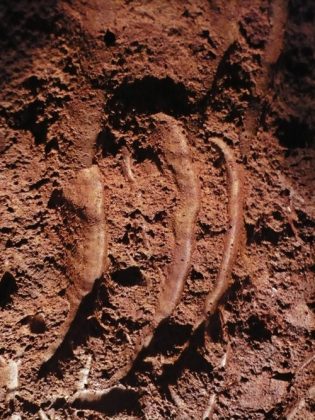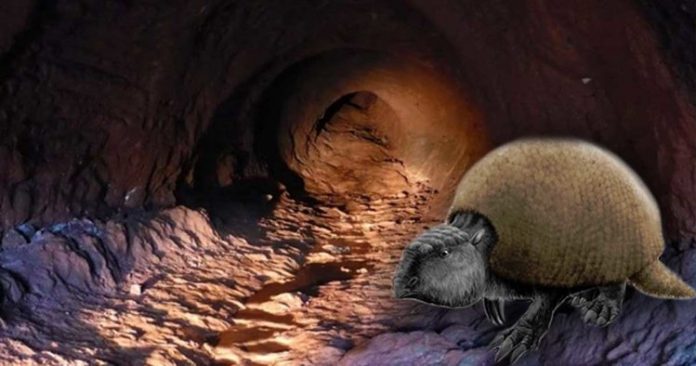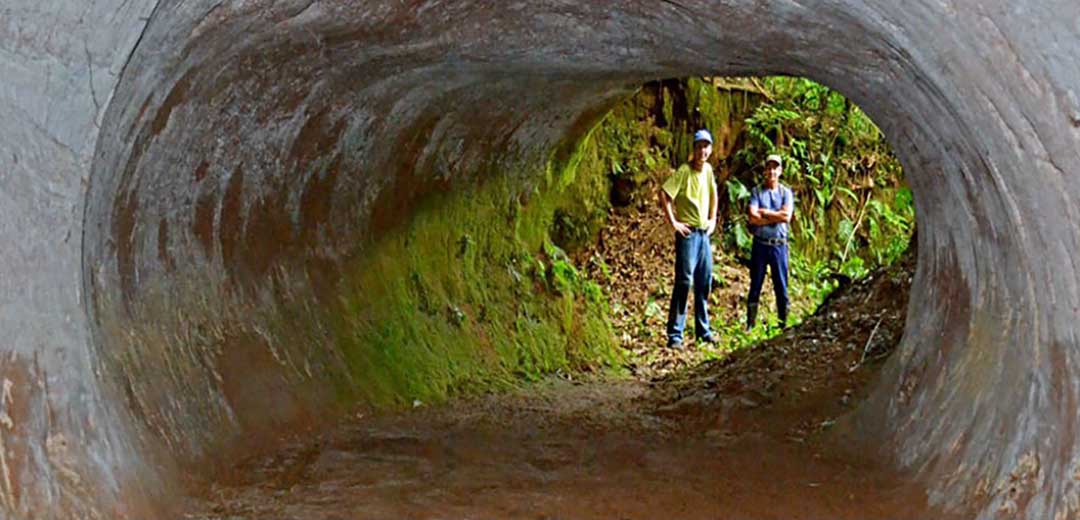10,000-Year-Old Mysterious Tunnels Discovered in Brazil: Unsolved Ancient Enigma

Research teams in South America have found many gigantic burrows that are so massive and neatly constructed that you’d be forgiven for thinking humans dug them as a passageway through the forest.
They are much older than they seem, they are estimated to be at least 8,000 to 10,000 years old, and they can not be explained by any known geological process. But then there are the massive claw marks lining the walls and the ceilings
Throughout Brazil, you can find the iconic statue of Christ the Redeemer and the awe-inspiring mountains of Corcovado and Sugarloaf. Travelers and adventurers will find in the country a magnificent slate of fauna like the giant anteater, many types of sloths, armadillos, otters, and even capybara in the country. However, Brazil has more than meets the eye. The country has its fair share of mysteries.
In 2010, geologist Amilcar Adamy from the Federal University of Rio Grande do Sul, found a giant hole a few miles north of the Bolivian border. Upon investigation, he realized that the hole could not have been naturally made. None of the caves Adamy explored looked like anything the tunnels featured, with their round passages and smooth floors.
The mysterious tunnels have since then been discovered by various experts around the country and have opened up an entirely new realm of possibilities for geological studies.
Geologist Heinrich Theodor Frank stumbled across the tunnels while driving on the national Novo Hamburgo Highway. While driving, a hole of around one meter in diameter caught his attention. The hole was located at a construction site, and after further investigation, Frank discovered that the hole led to a complex underground tunnel. The tunnel was about 70 centimeters high and a few meters in length, with what appeared to be strange scratches on the ceiling of its walls.

After further exploration, Frank realized that hundreds of similar tunnels existed all over Brazil. The state of Rondonia alone has a large complex of 600 meter-long tunnels. Not only that but 2,000 burrows with similar characteristics have also been found. Not even the locals in the area knew about the origins of the tunnels. Further tests showed that the tunnels were not man-made in origin.
Urban legends point towards various “historical” and even supposed “mythological” origins of the mysterious tunnels. Some say the tunnels were created by Indians, Jesuits, slaves, or even revolutionaries. Others believe the tunnels are a giant anthill or were even made by bears. Very rare few points towards a great mythological serpent that may have used the tunnel as its home.
Regardless, geological evidence alone proves that the tunnels were not created by Brazilian natives. The Indians who lived in Brazil even before the Europeans arrived did not use iron and therefore had no means of digging through the hard rocks around the tunnels.
According to Frank, there is no natural geological process known to man that can produce the features of the tunnels. These features include the circular or elliptical cross-sections that branch, rise, and fall around the area. The geographic distribution of the tunnels is another mystery to scientists. The tunnels were only found in the southern parts of Brazil – particularly in the states of Rio Grande do Sul and Santa Catarina. They don’t exist anywhere else.
The claw marks on the walls of the tunnels are also peculiar. Prehistoric animals such as giant armadillos or possibly mega-sloths are thought by many to be possible creators of such marks. The biggest burrows, with sizes of up to five feet in diameter, may have been dug by ground sloths that have adapted to the area’s environment and developed digging skills.
Giant armadillos, though shorter than sloths, may also have the skills necessary to dig these tunnels as well. The grooves along the ceiling may mark the animals have left whenever they pause or stop working. Unfortunately, there are no specific indications of these animals living in the country. Moreover, the sheer size of the tunnels cannot possibly be made by any “giant” armadillos or sloths – at least, ones that we know of.
The giant armadillo, the largest existing member of its family, weighs between 65 and 90 pounds and is native to South America. However, its burrows are about 16 inches in diameter, and only up to 20 feet long. If the tunnels’ five-foot wide and 250-foot-long burrows are dug by animals, then it should be one extremely big creature – one that has not been discovered yet. However, it seems there is still another possibility.

Frank eventually sent photographs of the tunnels to Marcelo Rasteiro of the Brazilian Society of Speleology. He introduced the notion of “paleo burrows” excavated by living organisms in any geological age.
Examples of these organisms include worms in the Cambrian Era, mollusks in the Mesozoic Era, and rats in the Pleistocene. These are all organisms that have lived millions of years ago. Until the early 2000s, hardly any burrows attributed to extinct animals could be found in the scientific literature. It was only in 2015 that Adamy himself had the opportunity to extensively explore the mysterious tunnels.
If this paleo burrow theory is to be believed, then the tunnels in Brazil may have been created between 10,000 and 8,000 years ago. If this is the case, then the Rondonia tunnels Frank has discovered may be the first – and the largest – paleo burrow in the Amazon. These tunnels can be found all over the world, which adds even more depth to the mystery. Frank said similar caves could be found in countries such as Uruguay, Paraguay, Chile, Bolivia, and Argentina.
Until scientists can figure out who, what, or how these paleo burrows were made, they will remain an unfathomable enigma.




